Obtaining a skin scraping
This technique is commonly used to identify mites such as Sarcoptes, Demodex, and Cheyletiella.
Next >
Skin scraping is commonly used to identify mites such as Sarcoptes, Demodex, and Cheyletiella. The skin scraping technique used can vary depending on the specific ectoparasite suspected, as described here.
Step 1

Use a laboratory spatula or a No. 10 scalpel blade dulled by repeatedly scraping the blade's edge on a hard surface.
Step 2

Apply mineral oil to the dull blade and the microscope slide, as well as to the lesion to be scraped.
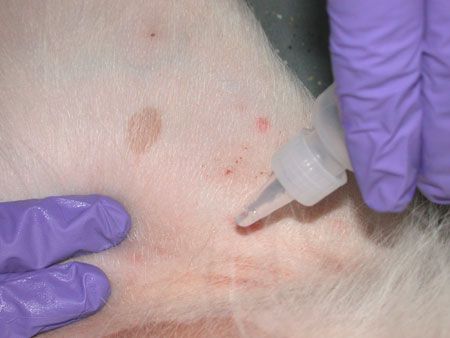
Step 3
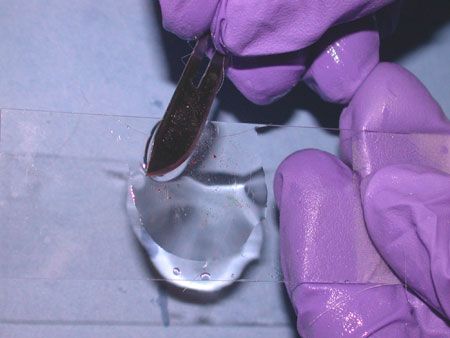
After scraping, mix the accumulated debris on the blade into the mineral oil on the microscope slide, apply a coverslip, and examine the slide under 4X to 10X magnification.
Step 4A-Demodex
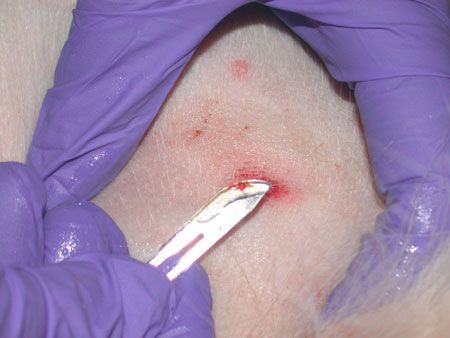
Demodex mites live in hair follicles, so their identification requires deeper skin scrapings than that used to identify other mites. Scrape the dull blade briskly in the direction of hair growth on the skin until capillary oozing is observed on the skin as well as on the blade. Be careful not to press down on the blade, which could cut the skin.
Step 4B-Demodex
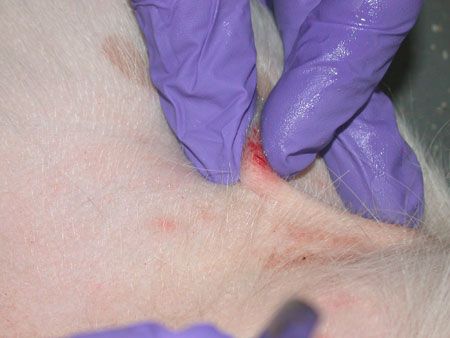
Between scrapings, intermittently squeeze the scraped area to help express mites and increase yield.
Step 4C-Demodex
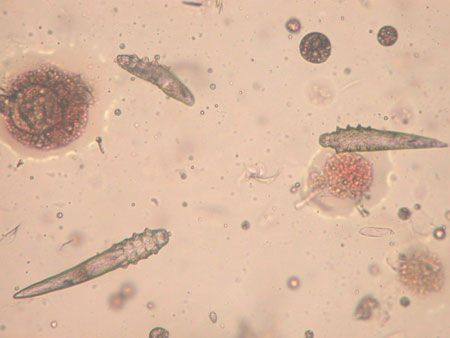
Demodex mites and nymphs (10X).
Step 5A-Sarcoptes

To identify infestation with Sarcoptes mites (scabies), obtain multiple wide superficial scrapings of crusted, papular, or alopecic lesions on elbows, pinnal margins, and the ventral trunk. Sarcoptes mites live in the stratum corneum and are often few in number. Consequently, false negative scrapings are common. So any animal with pruritus consistent with scabies should be trial-treated with appropriate acaricidal therapy.
Step 5B-Sarcoptes
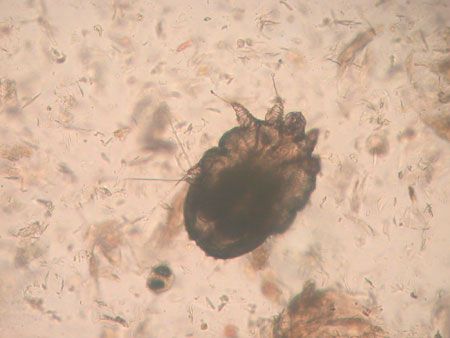
A Sarcoptes mite (10X).
< Back
Step 6-Cheyletiella
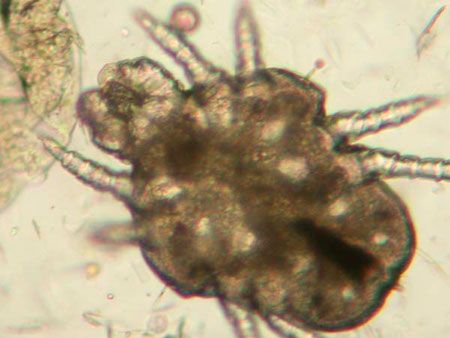
To identify surface-living Cheyletiella mites, obtain wide superficial scrapings of scaly lesions, and place these scrapings in mineral oil for microscopic examination; these large surface-dwelling mites are often found along the dorsum and are quite visible on 4X magnification, but can also be low in number. In some cases, Cheyletiella mites can be found by using multiple applications of clear (not frosted) acetate tape onto scaly areas. After sample collection, apply the tape to a microscope slide (no oil or stain is used) and examine under 4X magnification. As in cases of suspected scabies, empiric acaricidal therapy is often prescribed in cases of suspected Cheyletiella infestation.